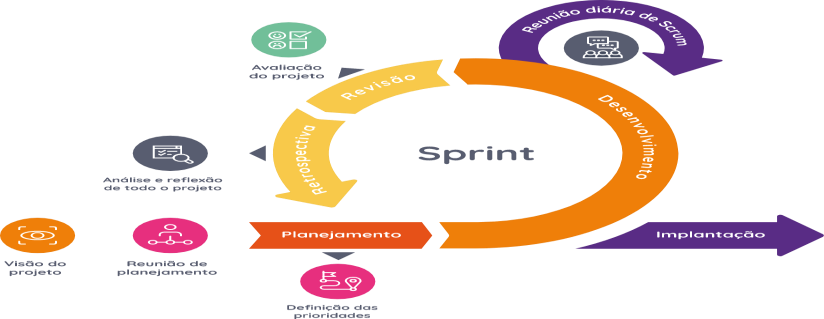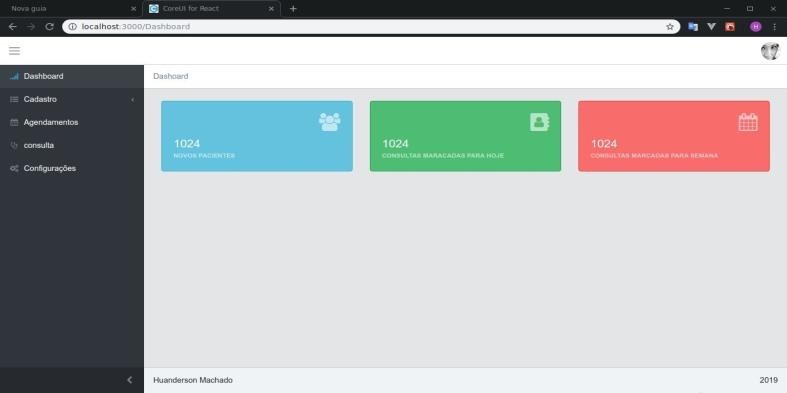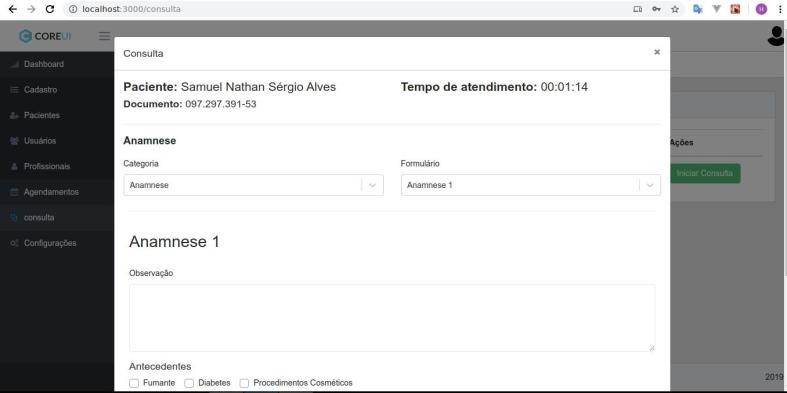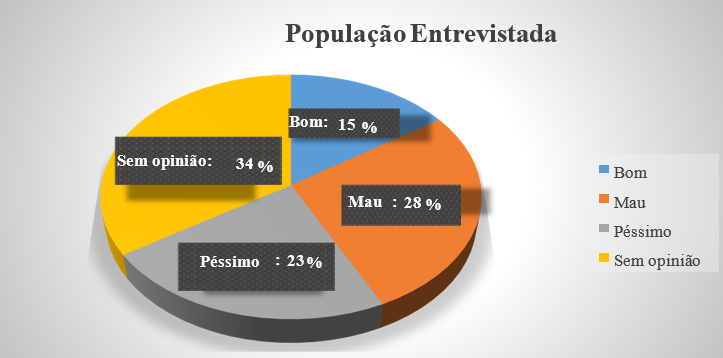
Original Article

Development of a web-based patient management system for the Malanje General Hospital
Desenvolvimento de um sistema web de gestão de pacientes para o hospital geral de Malanje
Desarrollo de un sistema de gestión de pacientes basado en web para el Hospital General de Malanje
Eduardo Ecundi Sachiambo Vatuva1 https://orcid.org/0009-0005-0788-128X
Fernando Rodrigues Bernardo2 https://orcid.org/0009-0007-0955-7736
Arnaldo Sandele2 https://orcid.org/0009-0005-1974-7520
Osvaldo de Horácio Maurício Chivinda2 https://orcid.org/0009-0003-4557-9546
Silva Mavungo3 https://orcid.org/0009-0004-0215-1520
Samuel dos Santos Zage4 https://orcid.org/0009-0005-8913-2935
1Metropolitan Higher Institute of Angola. eduardovatuva@gmail.com
2Kwanza Sul Polytechnic Institute. fernando@ispcs.ao; osvaldochivinda@gmail.com ; arnaldo.sandele@ispcs.ao
3Soyo Polytechnic Institute. silvinhomavungo@gmail.com
4Gregorio University Semedo. samueldossantoszage@gmail.com
Recebido: March 19, 2025
Aceite: July 28, 2024
ABSTRACT
The research aims to describe the development of a patient management system at the Malanje General Hospital, concomitantly with the lack of technological infrastructure, data loss, administrative inefficiency and delays in care. The proposed solution was the implementation of a hospital management system to improve the efficiency of services. During the field research, the following techniques were used: interview, questionnaire and observation. The following methods were used: descriptive, applied and exploratory, with a mixed approach, using the SCRUM development methodology. This development methodology was divided into phases: planning, development, review, retrospective and implementation. These phases allow the production of a flexible and productive work environment. The results include a main dashboard for administrators and users, and a detailed consultation screen for health professionals, showing improvements in the visualization of patient data, appointment scheduling and service time. Final considerations, the computational solution will assist hospital managers in decision-making and in improving administrative procedures as well as the quality of medical and drug care.
Keywords: care, hospital management, system.
RESUMO
A pesquisa tem como objectivo descrever o desenvolvimento de um sistema de gestão de pacientes no Hospital Geral de Malanje, e concomitantemente a ausência de infraestruturas tecnológicas, perda de dados, ineficiência administractiva e atrasos nos serviços de atendimento médico. A solução proposta foi a implementação de um sistema de gestão hospitalar para melhorar a eficiência dos serviços. Durante a pesquisa de campo, foram utilizadas as seguintes técnicas: entrevista, questionário e a observação. Os métodos utilizados são: descritivo, aplicado e exploratório, abordagem mista, empregou-se a metodologia de desenvolvimento SCRUM. Essa metodologia de desenvolvimento foi dividida em fases: planeamento, desenvolvimento, revisão, retrospectiva e implantação. Essas fases, permitem produzir um ambiente de trabalho flexível e produtivo. Os resultados incluem um dashboard principal para administradores, usuários e uma tela de consultas detalhada para profissionais de saúde, mostrando melhorias na visualização dos dados dos pacientes, agendamento de consultas e tempo de atendimento. Consideracções finais, a solução computacional, vai auxiliar aos gestores hospitalares, na tomada de decisão e na melhoria dos procedimentos administrativos bem como na qualidade da assistência médica e medicamentosa.
Palavras-chave: atendimento, gestão hospitalar,sistema.
RESUMEN
La investigación tiene como objetivo describir el desarrollo de un sistema de gestión de pacientes en el Hospital General de Malanje, y concomitantemente la ausencia de infraestructura tecnológica, pérdida de datos, ineficiencia administrativa y retrasos en los servicios de atención médica. La solución propuesta fue la implementación de un sistema de gestión hospitalaria para mejorar la eficiencia de los servicios. Durante la investigación de campo se utilizaron las siguientes técnicas: entrevista, cuestionario y observación. Los métodos utilizados son: descriptivo, aplicado y exploratorio, con un enfoque mixto se utilizó la metodología de desarrollo SCRUM. Esta metodología de desarrollo se dividió en fases: planificación, desarrollo, revisión, retrospectiva e implementación. Estas fases permiten un ambiente de trabajo flexible y productivo. Los resultados incluyen un panel principal para administradores, usuarios y una pantalla de consulta detallada para profesionales de la salud, que muestra mejoras en la visualización de datos de pacientes, programación de citas y tiempos de servicio. Consideraciones finales, la solución computacional ayudará a los gestores hospitalarios en la toma de decisiones y mejorará los procedimientos administrativos, así como la calidad de la asistencia médica y de medicamentos.
Palabras clave: atención, gestión hospitalaria, sistema.
INTRODUCTION
This research results from a data collection work at the General Hospital of Malange on patient data management, in unit health reference at provincial level. The unit in question faces several challenges from basic to more complex. During the research period, the lack of technological infrastructures, loss of patient data, inefficiency of administrative processes, delays in service to the users. This theme was chosen taking into account the social problems that the population malangina faces in its day by day. implementation of a technological infrastructure and the installation of a management system hospital , go improve administrative services and reduce bureaucratic procedures in order to make processes more efficient.
It is necessary to use technologies, tools and equipment that offer solutions innovative solutions capable of solving shortcomings in the work environment. The volume of paperwork and the possible information loss, enables distribution dynamic and comfortable tasks among the hospital team professionals responsible for their execution. In addition Furthermore, limited resources must be used as rationally and efficiently as possible. (Ferreira, 2006 cited by Leite and Ribeiro, sd p.2).
The process hospital is dynamic and is constantly evolving, being adequate one technological approach to workflows, which assumes different process models and performs environmental management (Andrade, Ferreira and Wangenheim, 2006; cited by Leite and Ribeiro, nd).
The authors (Cavalcante, Prestes, & Cardoso, 2019), highlight some reasons that define information usable in the administration hospital::
MATERIALS AND METHODS
This work was categorized as applied and exploratory research. The combination of methodologies qualitative and quantitative provided one holistic and integrated approach in the development of a web system for patient data management at Malanje General Hospital. While the methodology qualitative guaranteed one deep understanding of user needs, quantitative offered measurable data for the validation of the hypotheses. The methodology exploratory, in turn, allowed the exploration of new ideas and solutions innovative according to Machado, Vasconcelos, and Oliveira (2016), "this type of research aims to seek results related to the theme in order to complete the investigation and clearly understand the theme related to the object of study". This methodological basis was crucial to the success and efficiency of the system, ensuring that it meets the expectations and challenges of the hospital environment.
The research adopted the agile development methodology , SCRUM. This methodology has as its main objective reduce product delivery time . According to Schwaber and Sutherland (2020), "scrum is a lightweight framework that helps teams solve complex problems adaptively, generating value in a continuous". It works in cycles called sprints, in which:
The Product Owner organizes tasks in the Product Backlog;
The Scrum team selects tasks and transforms them into an increment of value;
The team and those involved analyze the results and make adjustments for the next Sprint.
Scrum is intentionally flexible, creates interactions and allows adaptation to different methods and processes. Its objective makes the effectiveness of practices visible current and facilitates improvements continuous.
The Scrum methodology is an agile methodology that serves for team software development; offers a flexible work environment, allows for increased productivity, follows project requirements in ways that the product be in compliance with the standards international.
The main objective of SCRUM was to assist in the development process of the project that evolved, since it was able to mold itself according to with the requirements and project flow over time. (Passion, 2021).
The SCRUM Methodology has four phases that begin again in each cycle:
Planning: this was the phase in which the team gathered with hospital healthcare professionals to understand the system ’s needs;
Development: at this stage were developed the modules, based on the planning. Meetings were held journals to discuss progress, adjust and maintain communication fluid with the team and tasks as needed;
Revision: In this phase, after the completion of each sprint, an evaluation meeting to demonstrate to stakeholders;
Retrospective: in this phase, the implemented tasks that presented improvements and others that needed to be improved based on the rector document;
Implementation: at this stage, the developed modules were delivered, which enabled the objective to be achieved.

Fig. 1- Describes the development methodology - SCRUM
Source: (Paixão, 2021)
RESULTS
The development of the web system for managing patient data at the Malanje General Hospital brought improvements significant in several aspects, in the service to the patient, as well as in efficiency of technical and administrative processes. The results presented are based on the observations and data collected after the development of the system.
Figure 2 shows the main page of the system that allowed one organization more efficient use of patient data, offers the main Dashboard with access to the administrator and users, a visualization clearer and more consolidated information.

Fig. 2-System Dashboard
Source: Personal Collection
The image below illustrates the consultation screen where the professional already chose which patient to attend and the main screen in the module opens, where the patient's main data is presented, the elapsed time of the consultation just below, the professional can choose which category of anamnesis form he wants to use.

Fig. 3-Query screen
Source: Personal Collection
Tabela 1- Opinião dos cidadãos angolanos em relação ao atendimento no Hospital Geral de Malange.
Indicator |
Masculine |
Female |
|
Subtotal |
||
|
Freq. |
% |
Freq. |
% |
Freq. |
% |
Good |
8 |
6.8 |
10 |
8.5 |
18 |
15.3 |
Bad |
15 |
12.8 |
17 |
14.5 |
32 |
27.3 |
Terrible |
12 |
10.2 |
15 |
12.8 |
27 |
23.0 |
Without opinion |
18 |
15.3 |
22 |
18.8 |
40 |
34.1 |
Subtotal |
53 |
45.2 |
64 |
54.7 |
117 |
100 |
The data in table 1- show the users' opinions regarding to the medical care at the General Hospital of Malange. The selected sample was consisting of 117 interviewees corresponding to 100%. Of these, 15.3% consider good service, 27.3% bad service, 23.0% terrible, while 34.1% no service opinion.

Fig. 4-Summary of users’ opinions regarding to the medical care.
Figure 4 shows that users' opinions regarding to the medical care 28% consider bad service, which justifies the need to develop a web system for patient management in order to improve the effectiveness of care.
DISCUSSION
Effective medical interventions aimed at people 's health are increasingly dependent on scientific and technological knowledge. The use of information systems in the health also requires good qualifications of professionals in accordance with the systems (Vieira, 2016).
In health policies, it is important to consider the transition from centralized models to more decentralized systems, with a focus on active participation of communities and in the optimization of available resources. In addition, the growing emphasis in the prevention and health promotion he has taken to a paradigm shift, directing resources towards actions that aim to prevent diseases and promote healthy lifestyles. The changes in health policies reflect the evolving needs of society, the search for greater equity in access to the services, the emphasis in the prevention and integration of approaches more comprehensive and technological, which aims to offer a health system more effective and focused on the well -being of the population, (Silva, 2012).
Information and Communication Technologies (ICT), in general, are seen as a strategic instrument for the development of institutions. With the emergence of the internet and its global reach, mediated by the World Wide Web, ICT has played extreme importance in the information and communication between people, in training and scientific research of citizens in various areas of knowledge, as well as in adoption of these technologies in various information systems. The Internet presents relevance in hospitals because it is one of the main elements in ICT support. In general, these tools have been used, and increasingly reinforced, as is the case with mail electronic because it is one of the main internet telematic services and has been widely used in hospitals as a means of communication (Lucamba, 2019 cited by Tati, 2023).
Rodrigues, Martins, and Marcili (2018), highlight that "web systems allow integration between different health institutions, enabling one centralized and accessible information management, which is essential for the continuity of patient care." This approach is particularly relevant in contexts where interoperability between systems is a challenge . User stories they are representations of user needs that can be used to define and organize the requirements of a system. They write features in a simple and short way, just with enough details to make a reasonably good risk estimate low.
Accordingly with Riviere (2023), health information systems generate efficiency in medical care by integrating relevant data for professionals, improving the quality of care to the patient. In addition, furthermore, effective data management contributes to cost reduction operational, minimizing medical errors, and streamlining administrative processes. Digitizing medical records and automating routine tasks allow healthcare professionals dedicate more time dedicated to direct patient care, increasing satisfaction and safety in care.
Information security is also a crucial aspect. Well -implemented systems ensure the confidentiality of patient data, meeting to the privacy regulations and protecting against access unauthorized access. The adoption of robust security protocols and the training continuous development of teams are fundamental pillars for success of this initiative.
The authors argue that managing patient data through a computerized system can significantly transform the quality of care, optimize resources and ensure the security of patient information. This approach no only improves the efficiency of health services, but also contributes to the satisfaction of patients and healthcare professionals.
Process automation institutional have revealed themselves as a solution innovative in the resolution of shortcomings in what concerns respect for data security and the effectiveness of the services provided. The proposed system will be an essential element in that process. The computational solution performs a crucial role in improving the quality of service to patients, generates a significant increase in medical and drug intervention and cost reduction operational.
CONCLUSIONS
The development of integrated software will be able to manage patient data at Malanje Hospital and significantly modernize clinical and administrative processes. The implementation this software allowed bigger security in the digitization and efficiency in handling patient information, which transformed the dependence on paper records into computerization, reducing service time and errors in the patient information management process.
Data security techniques such as encryption and access control were used to ensure data privacy and reliability. The system, integrated across different sectors of the hospital, contributed in the improved communication between healthcare professionals and patients.
The results demonstrate that the adoption of the web system in management hospital he brought benefits from organizing physicians ' manuals to making decisions based on more accurate data. This made, the development this system could contribute to the evolution of medical services in Malanje and serve as a model for other hospital units seeking improve your data management.
REFERENCES
Cavalcante, A. P., Prestes, A., & Cardoso, B. B. (2019). Manual do gestor hospitalar. Brasília: Federação Brasileira de Hospitais.
Leite, V. P., & Ribeiro, M. Implantação, análise e modelagem de um sistema de workflow hospitalar. Santa Catarina: UFSC.
Machado, J. C., Vasconcelos, M. C., & Oliveira, N. R. (2016). Investigação qualitativa em educação: pesquisa exploratória de políticas para formação de professores e redes de aprendizagem. Atas do Congresso Ibero-Americano em Investigação Qualitativa (pp. 155-164). Brasil: Ludomedia.
Paixão, M. (06 de Julho de 2021). Metodologia Scrum: tudo o que você precisa para não atrasar seus projetos. Obtido de witix: https://witix.com.br/blog-postagens/9/metodologia-scrum-tudo-o-que-voce-precisa-para-nao-atrasar-seus-projetos
Riviere, R. (18 de Agosto de 2023). Sistemas de informação em saúde. Sistemas de informação em saúde: quais são e qual sua importância, p. 2.
Rodrigues, G. P., Martins, M. B., & Marcili, V. R. (2018). Sistema web para gerenciamento de atendimento hospitalar "help doctor". São Paulo: USP.
Silva, D. V. (2012). Políticas públicas de saúde: tendências recentes. Lisboa: OpenEdition.
Schwaber, K., & Sutherland, J. (18 de 11 de 2020). The Scrum Guide: The definitive guide to Scrum: The rules of the game. Obtido de Scrum.org: https://www.scrumguides.org
Tati, J. V. (2023). Proposta de um sistema Web para melhoria na marcação de consultas no Hospital Geral do Huambo. Huambo: ISPCAALA.
Vieira, A. (2016). Tecnologia e saúde: Avanços e desafios. Saúde Pública, 123-130.
Declaration of conflicts of interest:
The authors of the article declare that there is no conflict of interest that would affect the publication of the article.
Authorship Contribution:
The authors also contributed to the conception, design and bibliographic research, which enabled the development and review of the content for final approval of the version to be published.
![]()
This work is licensed under a Creative Commons Attribution-NonCommercial 4.0 International License